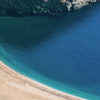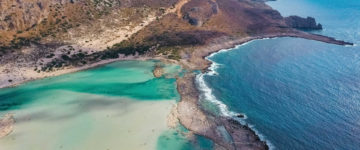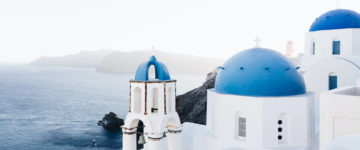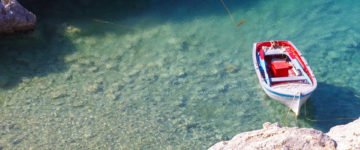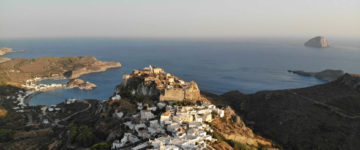
Paros, an oval shaped island with an area of 195 square kilometers is located 168 kilometers southeastern of Piraeus in Aegean Sea. The island is accurately (but hardly enticingly) known as the transportation hub of the Cyclades. Paros’s beautiful beaches and nice nightlife have made it a very popular destination in its own right — a lot of visitors come here simply to have a good time, windsurfing, sunbathing, and partying.
Still others, not necessarily opposed to having a good time, are drawn back over and over again to Paros because of its other attractions. Admittedly, if you come by ship, your first impression after docking at the main port and capital Parikia will be not please you. Parikia is the main commercial harbor and the capital of Paros and truly is fairly busy and noisy but it is an excellent shelter from meltemi and from the south winds. Where, you’ll wonder, is the town described as “charming” , so take a few steps inland, and you’ll find it.
Parikia has an energetic marketplace and the Ekatondapiliani, the 100-doored church designed in the 6th century by the famous architect Isodore of Miletus. Winding streets, the paving stones meticulously marked off with whitewash, lead off from the main square. One street meanders up and up, passing marble fountains and modest houses with elaborate door frames, to the remains of a medieval castle, largely built with chunks pillaged from various local ancient temples.
The island of Paros has been famous since antiquity for its excellent translucent marble, called Lychnites. This marble was used for the Temple of Solomon, the Venus de Milo, the temples on Delos, and for Napoleon’s tomb.
Cretans and then Arcadians were the first inhabitants in the island under their leader Paros, after whom the island was named. The 7th century bc the soldier and poet Archilochos who is believed to be the first to write iambic poetry was from Paros.
If someone consider the facilities of Paros from all the aspects , can understand that Paros has a little of everything one expects from a Greek island: this gentle and undramatic landscape arranged around the single peak of Profitis Ilias, old villages, monasteries, fishing harbors, a labyrinthine capital, nice beaches and varied nightlife.
However, the island can be touristy and expensive, and it can be more difficult visit it in August, when the other settlements the port of Naoussa and the offshore island of Antiparos, handle the overflow.
As for the anchorages in the island of Paros there are many of them. Part of Naousa, one of the known cities in Paros is operated as a marina. Then follows the Saint John and Plastira, both of them are all weather anchorages. Last but not least goes the Near Parikia, a quiet offshore anchorage, the Marpissa and Kefalos. The geographic coordinates of Paros are 37°05’14.4″N 25°08’58.6″E in Aegean Sea.

